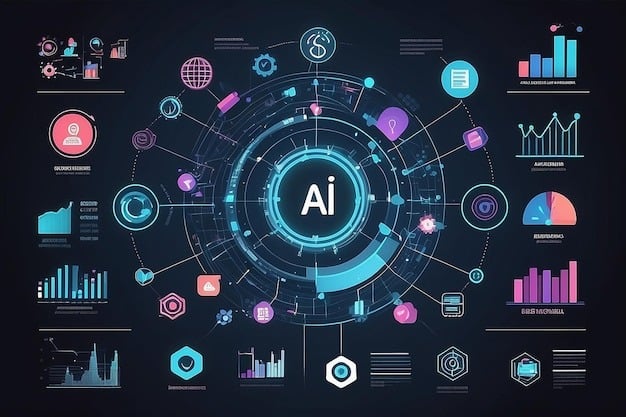AI Predictive Analytics: Tools, Retail, Solutions, and Marketing

AI Predictive Analytics: Tools, Retail, Solutions, and Marketing
Unlock the power of AI predictive analytics for retail 
In the rapidly evolving landscape of technology, businesses are increasingly turning to AI predictive analytics to enhance decision-making and operational efficiency. At Rapid Phone Center, we are dedicated to leveraging these advanced techniques to optimize our services and provide our customers with an unparalleled experience. This guide delves into the fundamentals of predictive analytics, its relationship with AI, and how our company utilizes these technologies to drive innovation in the telecommunications sector.

Predictive analytics involves analyzing historical data to predict future outcomes. By employing statistical algorithms and machine learning techniques, businesses can uncover patterns and trends that inform strategic decisions. With the rise of AI and predictive analytics, companies are now able to perform analysis at a level that was previously unattainable. Enhance customer experience with omnichannel customer service, ensuring seamless support across multiple platforms for consistent engagement.
AI vs Predictive Analytics: Which Technology Will Shape the Future?
AI for predictive analytics has transformed the way businesses approach data. Traditional predictive analytics relied on historical data alone; however, with the integration of AI, companies can now utilize a broader range of data sources and enhance their predictive accuracy. Here’s a closer look at how AI enhances analytics:
- Data Processing: AI algorithms can process vast amounts of data at incredible speeds, identifying patterns that may not be visible to the human eye.
- Enhanced Accuracy: AI-based analytics utilizes advanced machine learning techniques, resulting in more accurate predictions compared to traditional methods.
- Real-Time Analysis: AI allows businesses to analyze data in real-time, enabling quick decision-making based on the most current information.
While AI and predictive analytics are often mentioned in the same breath, it’s crucial to understand their differences. Predictive analysis ai refers specifically to the techniques used to analyze data and forecast future trends. In contrast, AI encompasses a broader spectrum of technologies designed to simulate human intelligence. Thus, predictive analytics vs AI becomes a matter of application: analytics uses AI tools for enhanced performance. Discover predictive analytics modeling techniques that empower businesses to forecast outcomes, optimize strategies, and drive growth.
AI Predictive Analysis: Techniques and Tools for Accurate Forecasting
Rapid Phone Center utilizes AI-based predictive analytics to revolutionize the retail landscape. By analyzing vast amounts of data, we help businesses forecast customer preferences and optimize inventory management. Our advanced algorithms identify trends and patterns, allowing retailers to make informed, data-driven decisions. This innovative approach not only enhances operational efficiency but also improves customer satisfaction, ensuring a seamless shopping experience tailored to individual needs.

In the realm of analysis, various AI tools can be employed to optimize results. Some notable AI tools for predictive analysis include:
- Machine Learning Algorithms: These can identify complex patterns in large datasets, significantly improving predictive accuracy.
- Natural Language Processing (NLP): NLP can analyze customer feedback, social media posts, and other unstructured data sources to inform models.
- Data Visualization Tools: These tools help present data insights in an accessible format, facilitating better decision-making.
Rapid Phone Center leverages AI predictive analytics for retail to transform customer experiences and optimize inventory management. By harnessing advanced algorithms, we analyze purchasing patterns and trends, enabling us to anticipate customer needs and streamline stock levels. Our innovative approach empowers retailers to make data-driven decisions, ensuring they remain competitive in a fast-paced market while enhancing overall efficiency and customer satisfaction. Unlock insights with predictive analytics modeling, enabling businesses to forecast trends, enhance decision-making, and drive performance.
Analytics AI: Transforming Data into Actionable Insights
The retail industry is a prime beneficiary of predictive analytics and AI. By understanding customer behaviors and preferences, retailers can tailor their marketing strategies, optimize inventory, and enhance customer experiences. Here are some ways AI retail analytics is making an impact:

- Customer Behavior Prediction: By analyzing past purchase data and customer interactions, retailers can anticipate future buying behaviors, allowing for personalized marketing strategies.
- Inventory Management: Analytics can help retailers forecast demand for products, reducing excess inventory and improving supply chain efficiency.
- Enhanced Customer Experience: By predicting customer preferences, retailers can create tailored shopping experiences that increase satisfaction and loyalty.
As the telecommunications industry continues to evolve, embracing AI and predictive analytics is essential for staying competitive. At Rapid Phone Center, we are committed to harnessing the power of these technologies to enhance our services, improve customer satisfaction, and drive business growth. Leverage business predictive analytics to forecast trends, optimize strategies, and make data-driven decisions for sustainable growth.
AI Solutions Predictive Analytics: Enhancing Decision-Making with Intelligent Forecasting
At Rapid Phone Center, we understand the importance of adopting AI solutions for analytics to stay ahead of the competition. Our strategies involve implementing AI-driven models that analyze customer data, sales trends, and market dynamics to refine our offerings and enhance customer engagement. Here’s how we do it:
- Data-Driven Marketing: We use AI for predictive analytics marketing to identify target demographics and tailor our advertising efforts effectively.
- Performance Tracking: By employing AI machine learning analytics, we continuously track performance metrics, enabling us to adjust our strategies in real time.
- Customer Support Optimization: Using predictive analytics, we can anticipate customer inquiries and optimize our support resources to ensure timely and effective responses.

By integrating predictive analytics using AI, we are not only optimizing our operations but also setting the stage for a more intelligent and responsive business model. We invite you to join us on this journey toward a data-driven future, where insights pave the way for informed decisions and strategic advancements. Boost revenue with outbound sales strategies, engaging potential customers directly through calls, emails, and targeted outreach efforts.
Rapid Phone Center harnesses the power of AI in predictive analytics to elevate retail performance. Our cutting-edge technology analyzes customer data to forecast trends, streamline inventory management, and enhance marketing strategies. By leveraging artificial intelligence, we empower businesses to anticipate customer needs and preferences, allowing for more targeted and effective solutions. This innovative approach drives efficiency, boosts sales, and improves customer satisfaction, ensuring lasting success.
Frequently Asked Questions
At Rapid Phone Center, we provide clear answers to your Frequently Asked Questions about AI analytics. Explore now!
What is AI predictive analytics?
AI predictive analytics uses machine learning algorithms and statistical techniques to analyze historical data and make predictions about future outcomes. It helps organizations forecast trends, behaviors, and events.
How does analytics work?
Analytics works by gathering historical data, identifying patterns and trends, and using algorithms to create models. These models can then predict future outcomes based on new data inputs. Supercharge your growth with effective lead generation strategies, attracting potential customers and driving conversions for your business.

What types of data are used in analytics?
Predictive analytics can use various types of data, including structured data (like sales records), unstructured data (like social media posts), and time-series data (like stock prices). The quality and quantity of data are crucial for accurate predictions.
What are the key benefits of using analytics?
Key benefits include improved decision-making, increased efficiency, enhanced customer satisfaction, reduced risks, and the ability to anticipate market trends and customer needs.
You may also be interested in our articles:
Good Luck to You, Thanks





